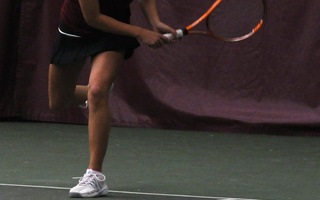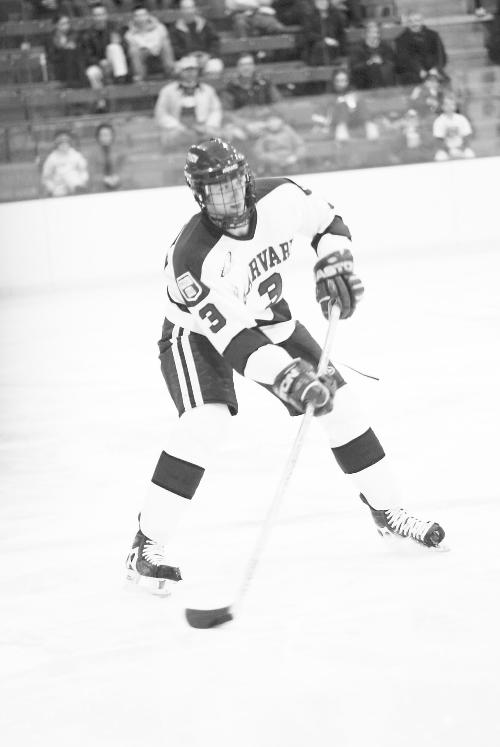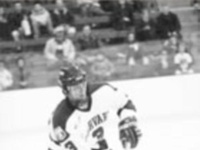Peter Hafner is 6’5, but his lanky height only leads the eye up to what really stands out in Boston: a faithfully donned Baltimore Orioles cap, an unapologetic homage of orange and black in a city that bleeds Sox red and blue.
Harvard men’s hockey’s 110th captain hails from Maryland—he’s lived there since he was four—and back home, No. 8 belongs to Cal (Ripken, Jr.), not Carl (Yastrzemski). Babe Ruth wasn’t lost in 1919 (when Boston dealt him to the New York Yankees), but in 1914 (when Baltimore dealt him to Boston). Sundays belong to the Redskins, not the Patriots, and Maryland crabs trump Boston chowder every time.
But Hafner’s a rarity.
Consider Crimson hockey from 1965, since that’s how far back the bound volumes of media guides can take us. Those 41 seasons yielded 42 captains, 34 of whom hailed from Massachusetts, Minnesota or Canada.
Five more came from Connecticut, Wisconsin, Michigan and Rhode Island, and there were but two from the Mid-Atlantic—Ithaca, N.Y. and Gladstone, N.J.—both of whom attended prep school.
And that’s as close as a Crimson captain ever came to Maryland.
* * *
It is with a mother’s pride that Betty Hafner says, “Pete skated beautifully at the end of his first day,” and so one can be forgiven for taking the comment with a grain of salt.
She’s probably right, though. At some point or another, her son played organized baseball, football, basketball, soccer, swimming, lacrosse, and ice hockey.
Even now, his buddies still call him “Activity Pete,” a nod to his nearly constant need for an impromptu toss of the football or swing at the whiffle ball.
The hockey bug seemed harmless when he first caught it—just add it to the list of carpools, Betty and Will Hafner shrugged. Their son’s first-grade class included two boys who skated on a youth team boasting pint-sized hockey sweaters. Moreover, the boys’ fathers’ had season tickets to the NHL’s Washington Capitals.
“Pete’s going to sniff these kids out,” Betty remembers thinking. “And he found them in 24 hours, and he wanted to learn how to skate.”
The game is no small undertaking for any family, but it is particularly time-consuming for those from hockey-barren locales like Gaithersburg, Md. In Boston, you can play a different team every week and never leave the state. Matters aren’t so simple in the Mid-Atlantic.
Peter Hafner made the Little Capitals, the southernmost member of the Atlantic Hockey League and the only Tier I program in the area at the time.
“The closest game for those seven years was in Philadelphia, two hours away,” he says.
Betty remembers those trips fondly now, even the times hotel security couldn’t handle the hellions running up and down the stairwells and playing knee-hockey in the hallway.
“Yes, it was inconvenient, and yes, it was extremely expensive,” she says, “but it was really, really great. It was a great time with your kid.”
Until, ironically enough, hockey drew her kid away from home.
* * *
Jeff Halpern is a Maryland legend of sorts, a Potomac kid who spent his youth adoring the Capitals and now captains the team.
He’s one of three NHL players the state can claim in the 88-year history of the league. A 2001 Baltimore Sun article reported that the second, Jeff Brubaker, lived there only briefly and that a league researcher could not name the third.
Harvard junior Ryan Maki, a former member of U.S. National Team Development Program, says he’s skated with “players from all over—places like Arizona and so on—but I don’t think I’ve ever played with anyone from Maryland.”
In those parts, the Little Capitals attracts most of the local youth, but “once you reach a certain level,” says former Little Cap Stephen Werner, “you kind of have to leave the area.”
Now a two-time captain at UMass, Werner joined the U.S. National Team Development Program during high school. Before the pros, Jeff Halpern went to St. Paul’s and then Princeton. Bubba Sixsmith (Holy Cross) attended the Canterbury School, and Hafner and Scott Seney (Union) both chose Taft. The trend at the time was prep school, though junior leagues are gaining popularity with each passing year. But in either case, kids from the D.C. area just need to get out.
“It’s almost that feeling where you have to leave at a certain point, if you really wish to play Division I hockey,” Hafner says.
These days, more and more local kids are good enough to do it. They’re getting drafted, too—Hafner in 2002 by the Florida Panthers, Werner in 2002 by the Capitals—and soon enough, Jeff Halpern may not be alone in the NHL.
* * *
Peter Hafner completed two junior years of high school: one at Landon in Maryland, and then another at Taft.
“Not a repeat year,” he says. More like a postgraduate year, another 12 months to develop on the ice—important for a kid who tended to spend summers playing everything but hockey.
The Maryland gene manifested itself during two standout Taft lacrosse seasons, one a captaincy, but college spelled the end of “Activity Pete,” at least in competition. For the 6’5, 200-lb. defenseman, springs seemed better spent in the weight room bulking up.
The lacrosse fields still generate an itch—that’s where a Maryland boy is supposed to be, after all—and while Hafner says he “chose not to play, it’s been difficult every year, it seems.”
But he still wears his Orioles cap, and Sundays still belong to the ’Skins. And maybe a few years down the road, if things work out, Marylanders will spend winters watching Halpern, Hafner and the rest of the local boys make good in the NHL.
—Staff writer Rebecca A. Seesel can be reached at seesel@fas.harvard.edu.
Read more in Sports
Crimson Looks to Add to Starting SuccessRecommended Articles
-
Harvard Week at Johns HopkinsThe university has absorbed Johns Hopkins—for this week, at least.
-
 Ailing No. 46 Harvard Shown No Mercy by No. 71 Maryland
Ailing No. 46 Harvard Shown No Mercy by No. 71 Maryland -
 Crimson Drops Two of Three Matchups
Crimson Drops Two of Three Matchups -
 Maryland Takes Tight 4-3 Victory Over Women's Tennis
Maryland Takes Tight 4-3 Victory Over Women's Tennis -
 Back-to-Back Victories Extend Softball’s Season
Back-to-Back Victories Extend Softball’s Season -
Who's in Charge Here?If you have a well-reasoned position on the optimal length of a sheriff’s term, well, then you are probably the sheriff. There is little reason to believe that the electorate, which the mainstream media perceives to be intellectually inferior enough to be susceptible to scurrilously depthless campaign ads, have the wherewithal to make critical decisions on issues that they cannot fully understand.















